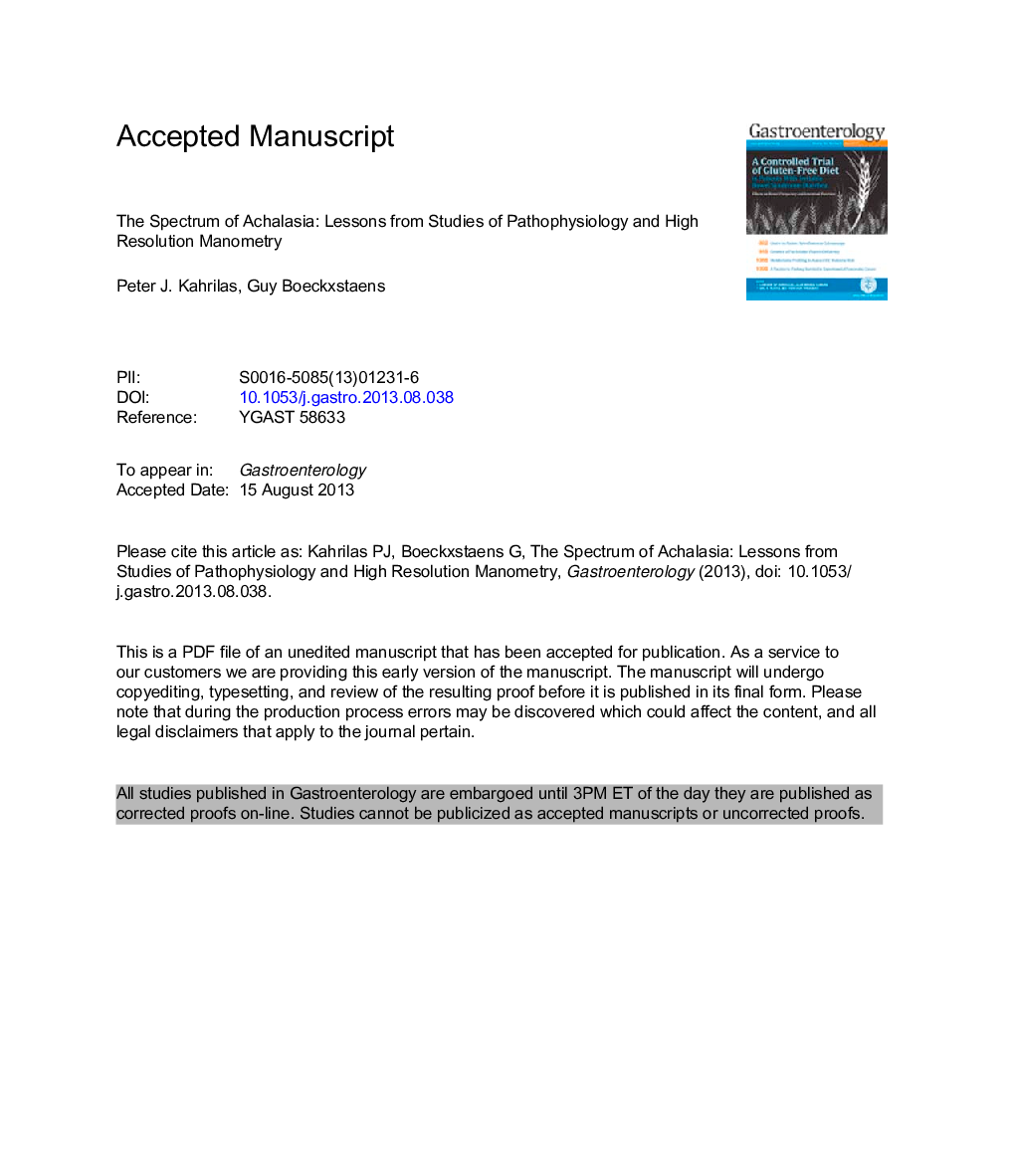| کد مقاله | کد نشریه | سال انتشار | مقاله انگلیسی | نسخه تمام متن |
|---|---|---|---|---|
| 6094828 | 1209810 | 2013 | 49 صفحه PDF | دانلود رایگان |
عنوان انگلیسی مقاله ISI
The Spectrum of Achalasia: Lessons From Studies of Pathophysiology and High-Resolution Manometry
ترجمه فارسی عنوان
طیف آخالاسیا: درسهایی از مطالعات پاتوفیزیولوژی و یک سنجش با وضوح بالا
دانلود مقاله + سفارش ترجمه
دانلود مقاله ISI انگلیسی
رایگان برای ایرانیان
کلمات کلیدی
LESEPTIRPHSV-1EGJTLESRachalasiaEsophagogastric junction - اتصال انسدادیLower esophageal sphincter - اسفنکتر مری پایینesophageal motility - تحرک مریtransient lower esophageal sphincter relaxation - ترشح اسفنکتر مری ماندگارEsophageal pressure topography - توپوگرافی فشار مریDysphagia - دیسفاژی یا دشاوباریintegrated relaxation pressure - فشار آرامش یکپارچهHerpes simplex virus 1 - ویروس هرپس سیمپلکس 1Pathogenesis - پاتونز
موضوعات مرتبط
علوم پزشکی و سلامت
پزشکی و دندانپزشکی
بیماریهای گوارشی
چکیده انگلیسی
High-resolution manometry and recently described analysis algorithms, summarized in the Chicago Classification, have increased the recognition of achalasia. It has become apparent that the cardinal feature of achalasia, impaired lower esophageal sphincter relaxation, can occur in several disease phenotypes: without peristalsis, with premature (spastic) distal esophageal contractions, with panesophageal pressurization, or with peristalsis. Any of these phenotypes could indicate achalasia; however, without a disease-specific biomarker, no manometric pattern is absolutely specific. Laboratory studies indicate that achalasia is an autoimmune disease in which esophageal myenteric neurons are attacked in a cell-mediated and antibody-mediated immune response against an uncertain antigen. This autoimmune response could be related to infection of genetically predisposed subjects with herpes simplex virus 1, although there is substantial heterogeneity among patients. At one end of the spectrum is complete aganglionosis in patients with end-stage or fulminant disease. At the opposite extreme is type III (spastic) achalasia, which has no demonstrated neuronal loss but only impaired inhibitory postganglionic neuron function; it is often associated with accentuated contractility and could be mediated by cytokine-induced alterations in gene expression. Distinct from these extremes is progressive plexopathy, which likely arises from achalasia with preserved peristalsis and then develops into type II achalasia and then type I achalasia. Variations in its extent and rate of progression are likely related to the intensity of the cytotoxic T-cell assault on the myenteric plexus. Moving forward, we need to integrate the knowledge we have gained into treatment paradigms that are specific for individual phenotypes of achalasia and away from the one-size-fits-all approach.
ناشر
Database: Elsevier - ScienceDirect (ساینس دایرکت)
Journal: Gastroenterology - Volume 145, Issue 5, November 2013, Pages 954-965
Journal: Gastroenterology - Volume 145, Issue 5, November 2013, Pages 954-965
نویسندگان
Peter J. Kahrilas, Guy Boeckxstaens,
